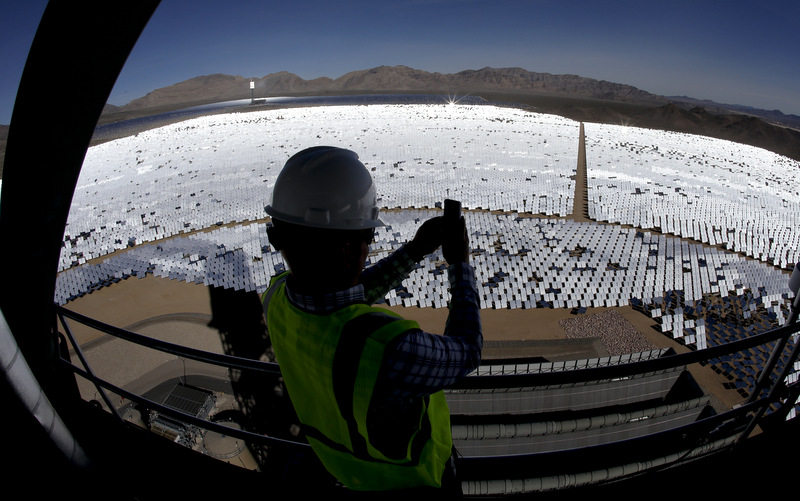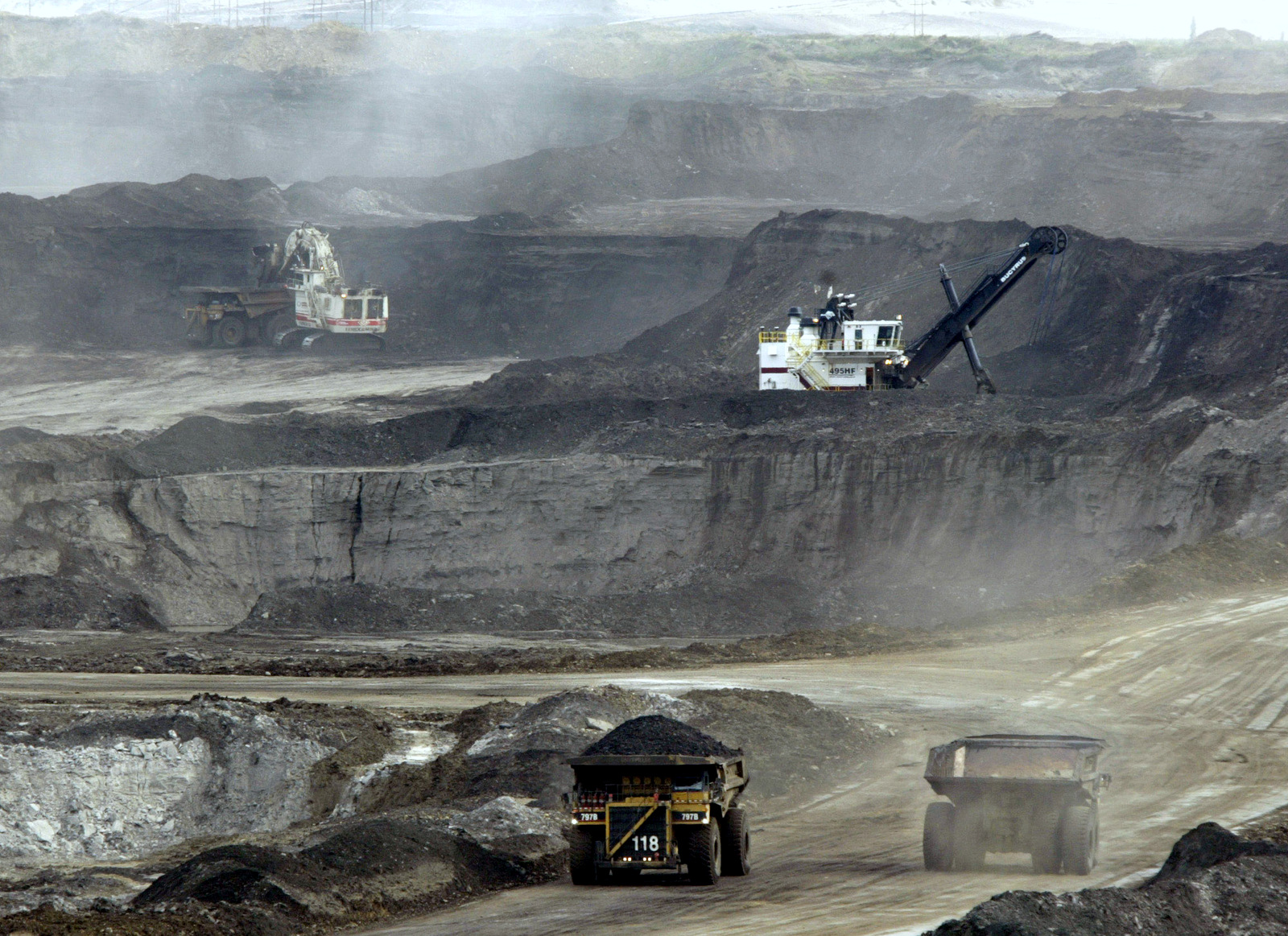
WASHINGTON — President Donald Trump claims that his energy policy creates high-wage construction jobs. Some of organized labor in the United States agrees with him, including North America’s Building Trades Unions, which is affiliated with the AFL-CIO, the country’s largest federation of unions.
On Jan. 24, NABTU released a statement in support of Trump after the president issued an executive order for completion of the Keystone XL and Dakota Access pipelines to move fossil fuel around North America.
“We are grateful that President Trump understands that 32 percent of today’s construction industry workforce is employed on energy projects, amounting to over 2 million workers, and that projects such as the Keystone XL and Dakota Access pipelines are significant job creators that generate above-average wages and benefits for hard-working Americans,” said the statement prepared by the alliance of 14 national and international unions in the building and construction industry that represent over 3 million skilled craft professionals in the United States and Canada.
In April of 2015, well before Trump was elected to the Oval Office, Sean McGarvey, president of NABTU, addressed the union’s ties to the Koch energy titans, major funders of the GOP and its tea party wing. In an interview with Kent Hoover, Washington Bureau chief of The Business Journals, McGarvey explained:
“Even if you look at Koch Industries — they’re one of our biggest clients. You’ll never see us making public statements saying negative things about Koch Industries. They’re a huge client of ours. Do we agree with some of the things that they supposedly support? No. Do we understand why they do it? Yeah, Ok, because they’re looking for political advantage for a political point of view, and the Democrats don’t see it the way they see it. And other unions in the labor movement tend to be much more Democratic unions. And if you can hurt the labor movement, i.e. you hurt the Democratic Party. It’s just a system that we really don’t want to be engaged or involved in.”
According to OpenSecrets, a project of the Center for Responsive Politics, Koch Industries spent $9.84 million on political lobbying in 2016. This followed years of a heavy spending from the Kansas-based multinational corporation, which had spent $10.83 million on lobbying in 2015 and $13.7 million in 2014. In the 2016 election cycle, Koch Industries donated more than $1.86 million to GOP Congressional candidates and just $23,000 to Democratic candidates, OpenSecrets reports. The top Republican recipients were the recently appointed CIA director, Mike Pompeo, a representative from Kansas who received $71,100 from Koch Industries; Sen. Roy Blunt of Missouri, who received $40,700; and Speaker of the House Paul Ryan, a representative from Wisconsin, who received $39,522.
Yet there are other views of the U.S. labor movement as the Trump administration wages a “shock and awe” campaign of rolling back climate and environment-related rules.
NABTU realignment

This NABTU support has been coming since the fight against the Keystone XL emerged in 2011 against TransCanada’s bid to mine more carbon-heavy and planet-warming bitumen from tar sands in northern Alberta, Canada, said Sean Sweeney, director of the International Program on Labor, Climate and Environment at the Murphy Institute and coordinator of Trade Unions for Energy Democracy. Located due north of Washington state, the tar sands of northern Alberta are a toxic strip mine the size of Florida, where extraction and separation systems separate bitumen from the clay, sand, and water that make up the tar sands. Bitumen requires additional upgrading before it can be refined, and must be diluted with lighter hydrocarbons to make it transportable by pipelines.
Sweeney further noted that this opposition has mounted more recently in response to the $3.8 billion Dakota Access pipeline.
In an interview with MintPress News, Sweeney said the American Petroleum Institute and NABTU formed an alliance in 2009. But there is more history here.
“The NABTU has been re-aligning itself away from the AFL-CIO,” Sweeney said. “There has been no formal split, though the official affiliation with the labor federation remains, e.g., a presence in the AFL-CIO headquarters in Washington, D.C.”
However, it’s important to note that NABTU can, from within the confines and credibility of the AFL-CIO, attempt to silence union critics of energy projects such as Keystone XL and Dakota Access, according to Sweeney.
“For both energy projects, the NABTU sent a series of scathing letters to unions, the press and anyone who would listen, disparaging pipeline construction opponents that they were not real unions and bottom-feeders,” he said.
Climate & jobs

According to the science that Ian Angus details in “Facing the Anthropocene: Fossil Capitalism and the Crisis of the Earth System,” completing the Keystone XL and Dakota Access pipelines will further carbonize the earth’s climate. This is what our warming planet does not need, the scientific evidence warns. For instance, the Keystone XL’s tar sands extraction, distribution and consumption is a recipe for a “climate bomb,” NASA scientist James Hansen wrote in a piece in the book, “A Line in the Tar Sands: Struggles for Environmental Justice.” That bombing will cook the planet, spurring sea levels to rise, extreme weather to increase and fresh water to decline, propelling humanity past a tipping point of runaway climate change.
Returning to U.S. labor unions, RoseAnn DeMoro is the executive director of National Nurses United, which is also affiliated with the AFL-CIO and has been critical of the Keystone XL and Dakota Access pipelines. The political failures of both parties to chart a new energy policy of renewable and solar sources is at the root of the labor and climate crisis, she said.
“The Democrats and Republicans have failed to-date to develop a public works plan (infrastructure),” she told MintPress via email, “that would not harm the environment—green jobs. Too many people do not have jobs.”
Moreover, a preponderance of jobs created from 2005 to 2015 have been precarious. On that note, in late March of 2016, two Ivy League economics professors, Lawrence F. Katz of Harvard and Alan B. Krueger of Princeton, released a paper on the growth of “alternative work arrangements,” which include independent contractors, freelancers, temp agencies, on-call employees, and contract workers.
The professors found that “all of the net employment growth in the U.S. economy from 2005 to 2015 appears to have occurred in alternative work arrangements.”
In terms of America’s unions, the Amalgamated Transit Union, the Transport Workers Union, New York State Nurses Association, National Domestic Workers Alliance, Domestic Workers United, United Electrical Workers and 1199 Service Employees International Union are some of the many unions to voice opposition to Keystone XL.
Joining these unions in opposition to the Dakota Access pipeline are the Communications Workers of America and the Service Employees International Union, plus the Labor Coalition for Community Action, representing AFL-CIO constituency groups like Pride at Work, Coalition of Labor Union Women and the A. Philip Randolph Institute, Sweeney noted.
Union members’ best interests?

On the other side of the fence is the AFL-CIO. In a Sept. 15 statement, the labor federation voiced its support for the Dakota Access pipeline. Arguing that “trying to make climate policy by attacking individual construction projects is neither effective nor fair to the workers involved,” the AFL-CIO urged the Obama administration to allow construction of the pipeline to continue.
Chris Williams, a professor of Physics and Chemistry at Pace University, environmental activist, and author of the book, “Ecology and Socialism: Solutions to Capitalist Ecological Crisis,” told MintPress via email:
“If construction union leaders who back Trump truly had their members’ interests at heart they would know that there are far more jobs available rebuilding the U.S.’s dangerously crumbling infrastructure, which received a D+ from the American Society of Civil Engineers. By their calculations, to bring U.S. dams, energy systems, sanitation, sewage, transit and a host of other infrastructure to safe and modern levels requires $3.6 trillion of investment between within the next three years.”
Look no further than an eroding emergency spillway at the swollen Oroville Lake Dam in Northern California. Gov. Jerry Brown issued an emergency order on Feb. 12 to facilitate the downstream evacuation of 200,000 people in nearby communities at-risk of catastrophic flooding from the severely damaged piece of infrastructure.
Speaking to MintPress, Winona LaDuke, the Ojibwe activist, author, economist and Ralph Nader’s vice presidential running mate on the Green Party ticket in 1996 and 2000, agreed with Williams’ critique of completing the Keystone XL and Dakota Access pipelines with labor union consent. Investing in renewable energy employment creates more jobs than investment in extractive and ecologically destructive employment, she said.
On this note, the bulk of the pipeline jobs are in construction, not operations, the Standing Rock Sioux tribal chairman, Dave Archambault II, told MintPress. His tribe is in the crosshairs of the Dakota Access pipeline, where “water protectors” and their allies in and out of U.S. unions have been protesting the 1,172-mile underground pipeline which will snake through four states.
But don’t take Archambault’s word for it. According to Energy Transfer Partners, which began construction of the Dakota Access pipeline after receiving final approval on Feb. 8 from the Army Corps of Engineers, “the Dakota Access pipeline and facilities” will support “40 to 50 jobs along the entire pipeline route.”
An ecological alternative to the Keystone XL and Dakota Access pipeline is renewable energy. According to a 2016 International Renewable Energy Agency report: “[R]enewable energy employment in the United States increased by 6 percent in 2015 to reach 769,000 jobs. Solar employment continued its rapid expansion—growing by almost 22 percent to reach 209,000 in 2015. Jobs in the solar industry grew 12 times as fast as overall job creation in the U.S. economy, and surpassed those in oil and gas extraction (187,200) or coal mining (67,929).”
According to the Bureau of Labor Statistics, there were 14.6 million American workers in labor unions in 2016. This figure represents a drop of 240,000 from 2015. Nevertheless, as a matter of history, labor unions’ solidarity forced capital to make concessions to improve people’s lives. The planetary emergency provides an opportunity for U.S. labor unions to advance policies of ecological sustainability.

